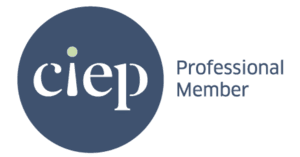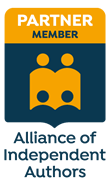Research objectives and research questions define the focus and direction of a study. Objectives state what the researcher intends to achieve, while questions specify what the study seeks to explore or answer. Together, they form the foundation of a coherent research design and ensure alignment between purpose, method and outcome.
This blog post explains what research objectives and research questions are, how they differ and how they work together to structure a coherent academic design. It provides examples from multiple disciplines, outlines where these elements appear in academic texts and offers a step-by-step guide for writing them. The post also highlights the importance of editing services in preparing research texts for publication and recommends key resources for further support.
List of contents
- Research objectives and research questions
- Research objectives vs research questions
- What is golden thread?
- 4 steps to write research objectives and research questions
- Editing services
- Resources
Key takeaways
- Research objectives and research questions guide the direction and scope of a study.
- Objectives state what the researcher aims to accomplish; questions specify what the study will explore.
- Objectives are declarative; questions are interrogative.
- Both should align with the research aim and methodology to maintain a strong golden thread.
- A strong golden thread connects the aim, objectives, questions and methodology, ensuring coherence and focus throughout the research.
- Academic texts typically present objectives before questions, often in the introduction.
- Editing services improve clarity, consistency and alignment, supporting publication success.
Research objectives and research questions
Research objectives and research questions guide the direction and scope of academic or professional research. They serve different but related functions in a study.
Research objectives define what a study aims to achieve. They break down the overall aim into specific, actionable goals. Researchers use objectives to stay focused and ensure that each part of the study contributes to the overall purpose. Clear objectives help identify the data needed and inform the research design.
Research questions specify what the study seeks to answer. These questions shape the inquiry by highlighting gaps in existing knowledge. A strong research question provides focus, encourages analysis and interpretation and aligns with the research objectives.
Examples
Here are clear examples of research objectives and research questions across various academic fields. In each case, the research objectives and research questions work together to define scope, clarify purpose and structure the study.
Education
- Research objective: To assess the impact of remote learning on secondary school students’ academic performance
- Research question: How does remote learning affect academic performance in secondary schools?
Public health
- Research objective: To evaluate the effectiveness of community-based vaccination campaigns in increasing immunisation rates
- Research question: What is the impact of community-based vaccination campaigns on immunisation rates?
Environmental studies
- Research objective: To analyse the relationship between urban green spaces and air quality in metropolitan areas
- Research question: How do urban green spaces influence air quality in major cities?
Sociology
- Research objective: To explore how social media usage shapes political participation among young adults
- Research question: In what ways does social media use influence political participation in people aged 18–25?
Business and management
- Research objective: To identify factors that influence employee retention in tech startups
- Research question: What factors affect employee retention in early-stage technology companies?
Literature
- Research objective: To investigate how trauma is represented in contemporary postcolonial novels
- Research question: How do contemporary postcolonial novels represent personal and collective trauma?
Academic texts
Academic texts that contain research objectives and research questions typically include articles and proposals, theses and dissertations, conference papers and grant applications.
- Journal articles: Peer-reviewed journal articles, especially in the sciences and social sciences, often state research objectives in the introduction and list specific research questions to guide the study.
- Dissertations and theses: Postgraduate academic projects clearly outline research objectives and research questions, usually in the introduction, to define the scope and contribution of the work.
- Academic proposals: These documents, often submitted for funding or ethics approval, explicitly state research objectives and research questions to justify the project’s relevance and feasibility.
- Conference papers: Shorter than journal articles, these papers often summarise research objectives and questions to establish the paper’s focus and methodology.
- Grant applications: Scientific funding applications must articulate clear research objectives and, where applicable, research questions to demonstrate rigour and impact.
- Monographs and edited volumes: Book-length academic works, especially in the humanities and social sciences, include research objectives and research questions in the preface or introduction to frame the argument or theme.
Location in academic texts
Introduction or background section
Most academic articles, dissertations and proposals state research objectives and research questions near the end of the introduction. This section frames the study and clarifies its scope.
After the research aim
Authors often begin with a general aim, followed by a list of objectives, then present the questions. This sequence strengthens the golden thread.
Research objectives vs research questions
The difference between research objectives and research questions lies in their function and form within a study.
Research objectives state what the researcher plans to achieve. They provide a clear, structured outline of the study’s goals. Objectives are usually expressed as statements using verbs such as investigate, analyse, evaluate or assess. They break the research aim into specific tasks.
Research questions define what the researcher wants to find out. They guide the inquiry by focusing on particular issues or relationships. These are written as questions and often begin with how, why, what or to what extent.
Key differences
- Form: Objectives are declarative statements; questions are interrogative.
- Function: Objectives guide what the study will do; questions guide what the study will explore or answer.
- Focus: Objectives outline goals; questions identify knowledge gaps and steer data collection.
| Aspect | Research objectives | Research questions |
| Purpose | Define what the study aims to achieve | Define what the study seeks to find out |
| Form | Declarative statements | Interrogative questions |
| Focus | Actions and goals | Problems or unknowns to investigate |
| Function | Guide the scope and direction of the research | Guide the inquiry and structure data collection |
| Typical verbs | Investigate, analyse, evaluate, explore, assess | What, how, why, to what extent |
| Placement | Often found in introductions or proposals | Often listed alongside or after objectives |
What is golden thread?
In the context of research objectives and research questions, the golden thread refers to the clear, logical connection that runs through the key components of an academic project. These components typically include the research aim, objectives, questions and methodology.
The golden thread ensures that:
- The research aim provides a broad, overarching purpose
- The research objectives break this aim into specific, manageable goals
- The research questions directly relate to the objectives and define what the study will investigate
- The methodology addresses the questions and supports the objectives
A strong golden thread links each element consistently. It helps maintain coherence, focus and academic rigour throughout the study. If the golden thread is weak or broken, the research may appear disjointed or unfocused. In short, the golden thread holds the study together by aligning intention, inquiry and method.
How to write research objectives and research questions
Here is a clear, step-by-step guide to writing research objectives and research questions. This template ensures alignment with your research aim and maintains a strong golden thread throughout.
Step 1: Define the research aim
Write a concise statement that captures the overall purpose of your study. Focus on what you intend to explore or understand.
Template
- This study aims to [general goal] in order to [broader significance or application].
Example
- This study aims to examine the impact of bilingual education on academic achievement in primary schools.
Step 2: Formulate specific research objectives
Break the aim into 2–4 focused objectives. Each objective should describe a specific action you will take to achieve the aim.
Template
- To [investigate/analyse/evaluate/identify] [specific aspect or variable]
- To [determine/assess/explore] [relationship, process or outcome]
Example
- To evaluate students’ academic performance in bilingual versus monolingual classrooms
- To identify teacher perceptions of bilingual education
- To assess parental involvement in bilingual learning environments
Step 3: Develop research questions
Write open-ended questions that directly relate to each objective. These should guide data collection and analysis.
Template
- What is the effect of [variable] on [outcome]?
- How do [stakeholders] perceive [phenomenon]?
- In what ways does [process or intervention] influence [context or result]?
Example
- What impact does bilingual instruction have on students’ test scores?
- How do teachers perceive the benefits and challenges of bilingual education?
- In what ways do parents support bilingual learning at home?
Step 4: Check for alignment
Ensure each research question corresponds to an objective and all objectives support the aim. The aim, objectives and questions should form a coherent golden thread.
Summary checklist
- Clear, focused research aim
- 2–4 specific, action-based research objectives
- Directly related, open-ended research questions
- Logical alignment throughout
Editing services
Professional academic services such as copyediting and proofreading play a key role in preparing academic texts for publication. These services ensure clarity, consistency and compliance with academic standards, which is essential for successful peer review and publication.
Copyediting
- Improves clarity and precision: Copyeditors refine phrasing to make objectives and questions more concise and unambiguous. They ensure consistent use of terminology, logical structure and appropriate academic tone.
- Strengthens alignment: Copyeditors check that the research aim, objectives and questions form a coherent golden thread. They flag inconsistencies or gaps that could weaken the argument or confuse readers.
- Ensures discipline-specific conventions: Different fields may favour particular formats or styles. Copyeditors adjust the structure and language to match expectations in the target journal or discipline.
- Checks adherence to style guides: Copyeditors apply citation and formatting rules (e.g. APA, Chicago, MLA) and ensure the text complies with submission guidelines, reducing the risk of desk rejection.
Proofreading
- Eliminates surface errors: Proofreaders correct grammar, punctuation, spelling and typographical issues that may undermine the professionalism of the text.
- Enhances readability: Final checks improve sentence flow and consistency in formatting, helping the reader engage more easily with the content.
- Supports submission readiness: A polished, error-free manuscript is more likely to make a strong impression on editors and reviewers.
Resources
- Academic Phrasebank by the University of Manchester is useful for finding standard phrases to introduce aims, objectives and research questions
- Developing Effective Research Proposals by K. F. Punch provides step-by-step advice on structuring proposals, with clear sections on objectives and research questions.
- “Organizing Your Social Sciences Research Paper” by University of Southern California Library is a comprehensive online guide with sections on research questions, aims and methodology
- Research Design: Qualitative, Quantitative and Mixed Methods Approaches by J. W. Creswell and J. D. Creswell offers detailed guidance on formulating research problems, aims, objectives and questions across methodologies.
- Research Methods for Business Students by M. Saunders, P. Lewis and A. Thornhill covers research design in applied contexts, with templates and examples .
- SAGE Research Methods offers case studies, videos and step-by-step tutorials on developing research frameworks
Conclusion
Research objectives and research questions form the foundation of any well-designed study. Objectives define what the research will achieve, while questions identify what it will investigate. A clear connection between these elements ensures focus, coherence and methodological rigour throughout the research process.
Contact me if you are an academic author looking for editing or indexing services. I am an experienced editor offering a free sample edit and an early bird discount.


